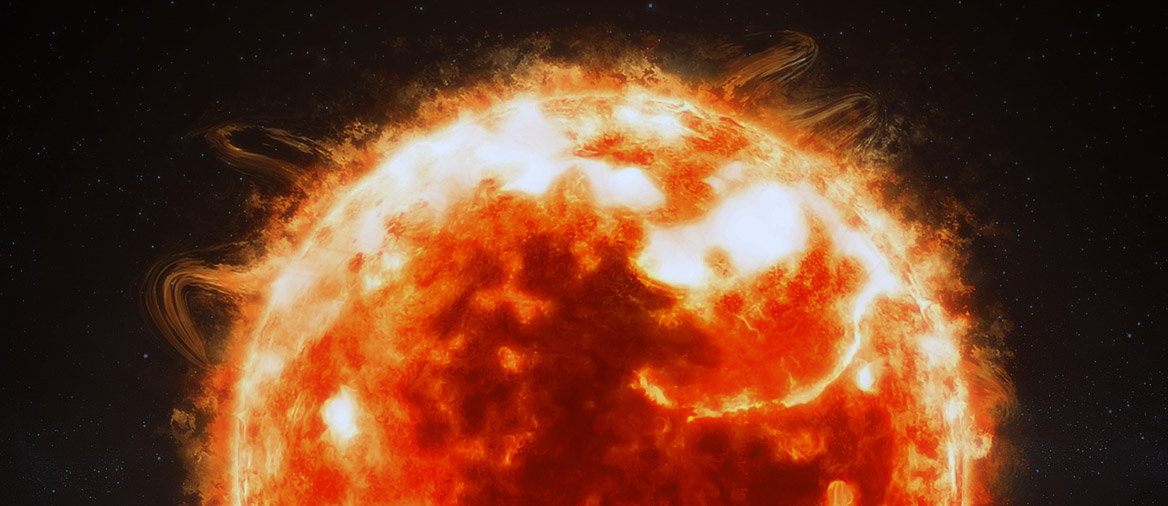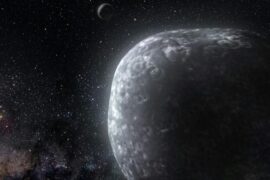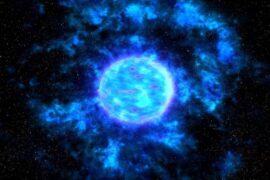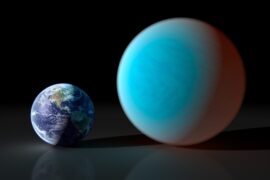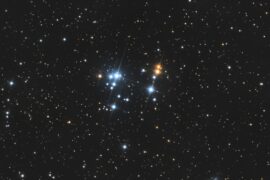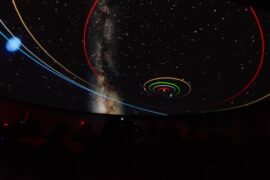The words Sun and star are often used interchangeably, but is there a difference between the two terms? which one is used correctly? Let’s answer all those questions. If you want to skip all the detailed explanations, here’s the quick version.
The difference is really simple. The Sun is a star, but it is the only star with that name. All the other bright celestial objects are simply referred to as stars.
The Sun is a star

Sun is the name we use for the star at the center of our Solar System. It is the star we see rising in the East in the morning and the one that bathes our planet’s surface with heat. So yes, the Sun is a star.
However, not all stars are suns. Using the term sun to refer to any other star is incorrect. Sun is not a synonym for star.
So why is it sometimes used as such?
The confusion comes most likely from some science fiction movies and books. In those works, the local star or stars are often referred to as “suns”.
Star Wars is guilty of this. In Episode I, when Anakin is about to leave Tatooine, his mom tells him “You can’t stop change any more than you can stop the suns from setting”.
Another misuse of the word “suns” would be the name of the professional basketball team, the Phoenix Suns.
We know we are being a bit nitpicky about the use of the word here, and generally, there is no problem with using Sun as a synonym for star, but hopefully, those examples serve as clarification to understand the difference between the terms.
There are, however, some valid cases where you could use the word suns in plural form. For example, the famous quote by Robert Oppenheimer where he described the atomic bomb as being “as bright as a thousand suns” would be correct, because he was specifically talking about the brightness of our Sun, and not the brightness of any star which would be variable depending on which one you are talking about.
Some people have proposed to modify the meaning of the word sun to refer to stars with planets that have habitable conditions, or that are inhabited by humans, but since we only have one of those planets at the moment, it could be quite a while before expanding the definition of the word is necessary or useful.
The Sun compared to other stars
Our Sun is a very average star. It’s a main-sequence yellow star that is around the middle of its lifespan. It is in the middle of the pack in terms of size too, and like most stars, it is not part of any multi-star system.
There are millions of other stars that are very much like our Sun, and fewer with different characteristics, but let’s compare it to some of the most recognizable stars that we can see from Earth so you can how different it is from those.
The chosen stars are the following:
- Polaris, also known as the northern star because it always points almost exactly to the North pole
- Betelgeuse, in the constellation of Orion it is one of the most recognizable stars due tyo its red-ish tone
- Vega, a very bright star in the Lyra constellation and part of the Summer triangle
- Alpha Centauri A, the biggest star in the Alpha Centauri system, which is the closest star system to our own.
Note that most of the units astronomers use to compare stars are based on the metric for the Sun. For example, the mass of the Sun, which is about 1.988x 1030 kilograms, is considered 1 solar mass, so a star with a mass of 2 solar masses, has 2 times that.
| Sun | Polaris | Betelgeuse | Vega | Alpha Centauri A | |
|---|---|---|---|---|---|
| Type | Main-sequence yellow star | Yellow supergiant | Red supergiant | Main-sequence white star | Main-sequence yellow star |
| Mass | 1 Solar mass | 5.4 | 16.5 | 2.13 | 1.1 |
| Radius | 1 Solar radius | 37.5 | 764 | 2.3 | 1.2 |
| Luminosity | 1 Solar luminosity | 1,260 | 126,000 | 40.12 | 1.519 |
| Temperature | 5,772 K | 6015 K | 3,600 K | 9,602 K | 5,790 K |
| Rotation | 25 days | 119 days | 36 years | 12.5 hours | 22 days |
| Age | 4.6 billion years | 70 million years | 8 million years | 455 million years | 5.3 billion years |
What is a star
If you still have questions about what a star actually is and why the Sun is one, hopefully, this will help.
Stars are huge spheres of hot gas and plasma. The star is constantly being pushed and held together by its own gravity, and because of these, nuclear reactions start happening in its core, constantly releasing light and heat.
Tho closest star to Earth is the Sun, which is right in the middle of our Solar system. Our planet orbits around the Sun.
There are many stars in the universe, so many that we don’t know exactly how big the number is. Our current estimate is that there are more than 200 billion trillion stars in the observable universe. That is one 2 with twenty zeroes in front of it, and that’s just the ones in the corner of the universe that we can see from Earth. there might be many more beyond that.
As you could imagine from such a big number, there are stars of many different types, ages, sizes, and temperatures. There are stars out there that are hundreds of times bigger than the Sun, and there are stars that are 10 times smaller.
Summary
- The Sun is the star at the center of our Solar system
- The Sun is a star, but only our star is called the sun
- There are stars of many types
Enjoyed this article?
Get daily 10-minute PDFs about astronomy to read before bed!
Sign up for our upcoming micro-learning service where you will learn something new about space and beyond every day while winding down.

